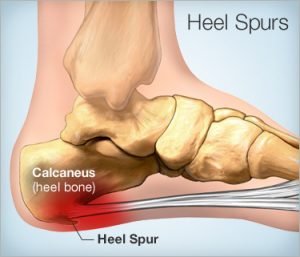Heel Spurs
 Causes of Heel Spurs and Effective Treatments
Causes of Heel Spurs and Effective Treatments
Plantar Fasciitis and Heel Spur are two conditions which are always mixed up and confused with one another. There are no common symptoms of a heel spur and this condition can only be seen through an x-ray. When one experiences pain in the heel area, the heel spur is not primarily the cause of the pain but the inflammation of the plantar fasciitis.
Heel spurs usually occur when there are calcium deposits on the underside of the heel and are very common in athletes who incorporate a lot of running, walking, and jumping in their daily routine.
What Causes Heel Spurs?
When there is repeated strain on the ligaments and muscles of the foot this can cause a tear in the membrane that covers the heel bone and when this happens, in a period of many months you can expect a heel spur. Wearing ill fitted shoes, running on hard surfaces such as concrete, and excessive weight gain can also increase your chances of getting a heel spur.
Other risk factors include having flat feet, prolonged standing, and ageing. In general causing too much stress on your feet can increase your chances of not only getting heel spurs, but getting other foot problems that can cause pain and soreness to your feet.
Treatments for Heel Spur
If there is heel pain associated with the heel spur, some non surgical treatments include using proper fitting shoes, shoe inserts, physical therapy, and simple stretching exercises daily to relax and distress the foot. You can also treat heel pain with over the counter medications and an injection of corticosteroid can provide relief to the swelling area.
Most of the time heel spurs don’t exhibit pain or inflammation at all so to remove it surgically, heel spur treatments are suggested.
Find relief in your heel spur by calling us at Good Feet and expect us to find the best solutions to the aches and pains on your heel. Choose from the selection of Happy Feet products created to help alleviate pain and pressure.
